a Hard Rain’s A-Gonna Fall
Aalst (BE) - Winner

Pedro Pitarch
TEAM DATA
Associate: Pedro Pitarch Alonso (ES) – architect
Pedro Pitarch architectures & urbanisms
Palma 59, Bajo B
28015 Madrid, Spain
mail@pedropitarch.com / www.pedropitarch.com
See the complete listing of portraits here
See the site here
TEAM PORTRAIT
VIDEO (by the team)
INTERVIEW
Click on the images to enlarge
1. How did you form the team for the competition?
From the very early stages of my professional practice, I’ve tried to organize the office as a platform for researching and developing innovative architectures for the city. The approach to the project here arises as a direct response to that ethos in relation to the Europan 16 competition. Europan offers a unique context to rethink the role of architects in the contemporary city by defining a critical framework from which to reinvent conventional architectural typologies and to transform them into social condensers of cultural and economical innovation.
2. How do you define the main issue of your project, and how did you answer on this session main topic, Living cities?
Instead of defining a rigid formal masterplan for the whole site, the project embraces time as an architectural tool.
The project for Tragel Zuid is the first step of a wider strategical activation that involves the whole De Kaaien area and the riverbanks of the Dender.
Tragel Zuid will act as a Urban Prototype, serving as a testing ground from where to define a urban model where the dichotomies between work vs. life, and nature vs. urbanity are no longer so rigid, but blurred into intermediate states where leisure and labor overlap in time within the same spaces, contexts and atmospheres.
Informal architectural devices will activate the site, supported by protocols of appropriation of the existing architectures and followed by the insertion of ecologies in the form of vegetation, energies and soft industries. They will operate as testers for future architectures.
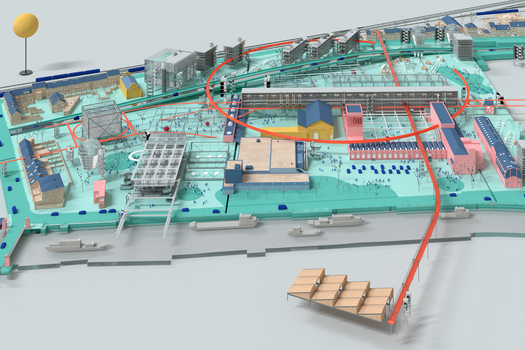
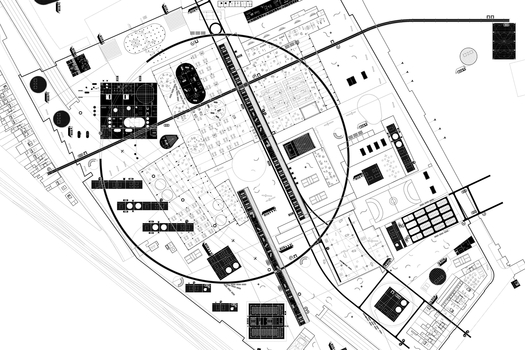
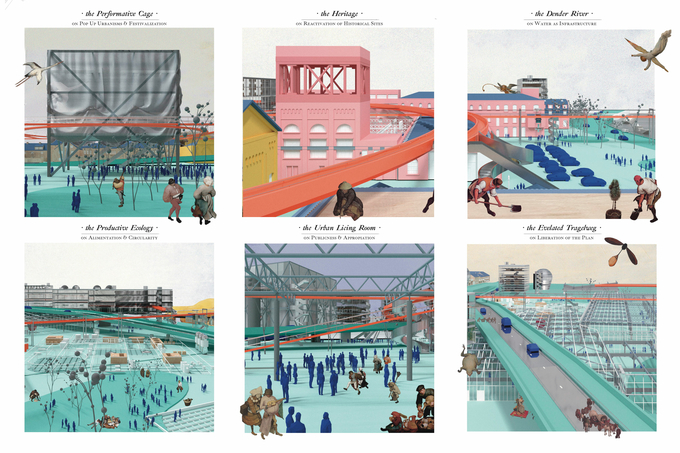
The activation of the whole study site of De Kaaien is achieved through three main urban strategies that operate at three scales. At an ‘Infrastructural Scale’ the project behaves as a Logistics Tigger: Currently, Flanders presents an unequal distribution of its industries that, condensed in large cores distanced from the metropolitan areas, increase the tension and inequality between capital cities and province cities. For De Kaaien we propose a gradual transition towards Industries 4.0, circularity and renewable energies. Reaching a territorial model that explodes the large industrial, logistics and energetic hubs and disperses them throughout the territory in multiple small local industries and integrated energy productions, as well as ecologically responsible. Moreover, at an ‘Environmental Scale’ the proposal act as an Ecological Distributor: The Dender river is not a mere waterway but an active distributor of ecologies and programs. The river will no longer be a differentiated and secluded element, rather, it will integrate and hybridize with the architectures, ecologies and urbanisms of the project. The Render river becomes an architectural artifact, a medium for the coordination of many sites, of many programs and events. And finally, at a ‘Social Scale’ the project is a Programmatic Activator: Tragel Zuid becomes a node from which other un-programmed spaces could be activated, appropriated and temporarily used for cultural production. These productive un-programmed spaces are urban islands for metropolitan opportunities to arise.
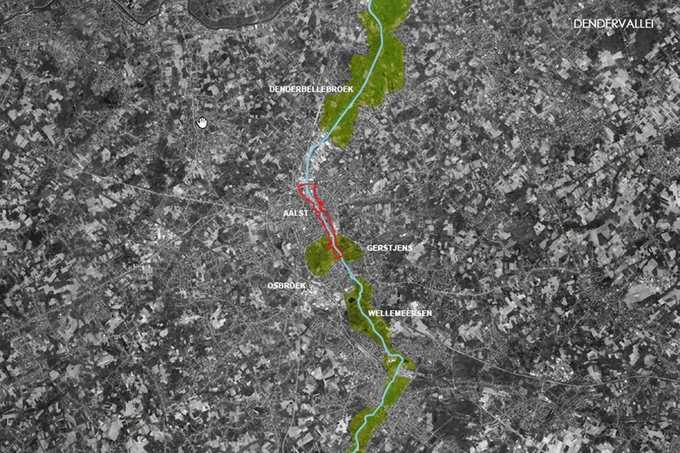
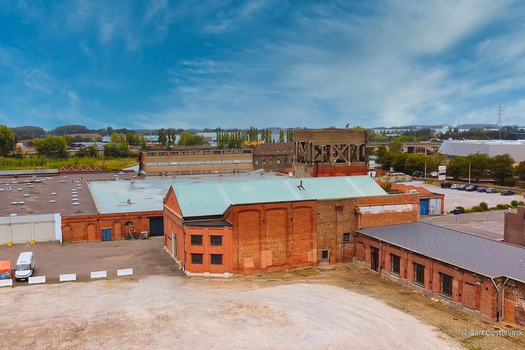
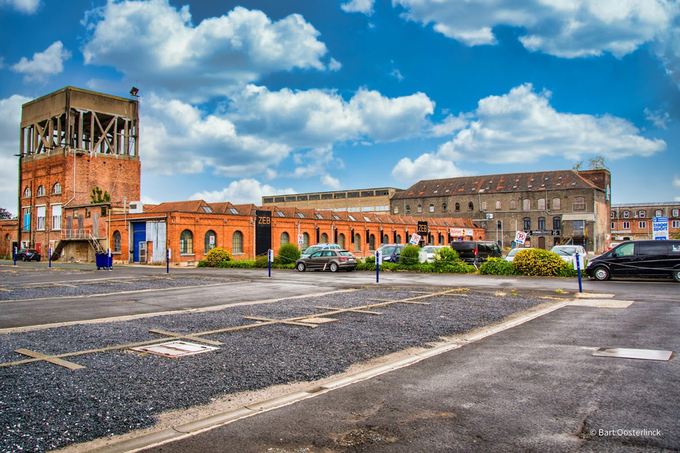
Yes. Through the development of three different strategies in three projects:
On 2017, we started working with time as an architectural tool. With the project for the National Museum of Cyprus we envisioned an archaeological museum that would be constructed and implemented through the years, understanding the project as a sequence of intermediate stages. Later on, we worked from an environmental scale for Berlin Brandenburg 2070 masterplan, where one of our proposals was the development of an ecologically resilient urbanism for Königs Wusterhausen (Germany, 2020). There, we implemented a hybridization of domesticity with public uses and a reflection around ‘work vs labor’ dichotomy that has been further explored here at Aalst for Europan 16. And finally, we are currently working with heritage through the re-programmation of two historical buildings from the late XIX century, specifically through the Construction Development of a Social and Cultural hub at the former Central Cinema of Cartagena (Spain, 2020-2022). The project arises as an architectural re-contextualization of the whole site, creating a common spatial framework for the citizens’ cultural activities: concerts, theatre plays, exhibitions, café, library, working spaces and even an open-air summer-cinema at the rooftop.
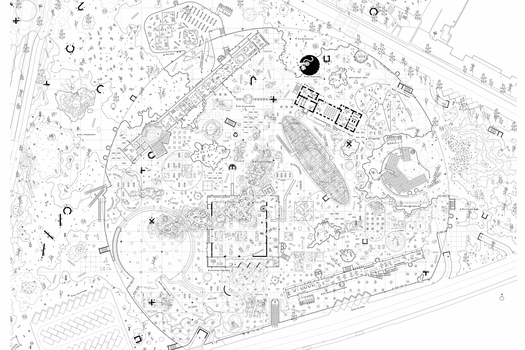
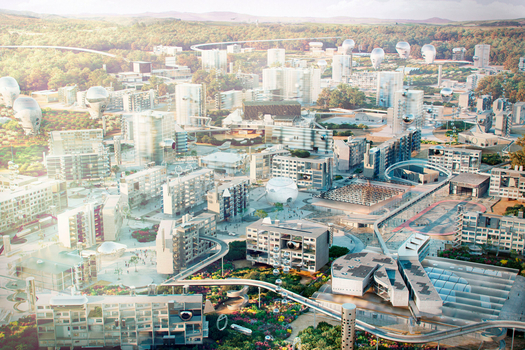
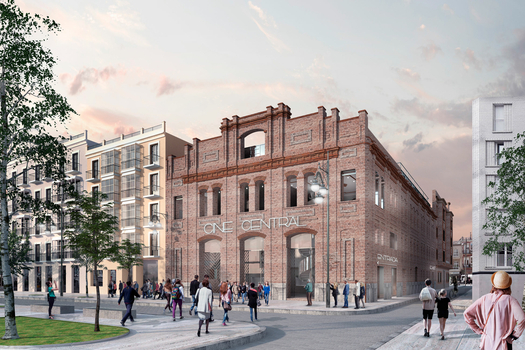
Time plays a significant role in the design of the project. As the whole masterplan is curated on a timeline, using a play script in which several formal and informal interventions are counterpointed through the years. Basically the script is articulated in two main acts. On the first one a series of informal Pop-Up architectural devices will activate the site, supported by protocols of appropriation of the existing architectures and followed by the insertion of ecologies in the form of vegetation, energies and soft industries. They serve as contextual testers for the future requirements of the site, before the construction of harder architectural infrastructures On a second act, more permanent architectures will be given to the programs and uses that are proved to function during the first phase. Accordingly, the natural grown of the introduced ecologies will help to construct a series of atmospherical contexts that will help to accommodate the future uses.
6. Is it the first time you have been awarded a prize at Europan? How could this help you in your professional career?
Yes, it is indeed. I am extremely grateful to have been awarded this prize at Aalst. And furthermore, I'm very glad for also being acknowledged at Europan 16 with runner-up prizes at Graz (Austria) and at Wernigerode (Germany). Europan 16 is definitely a unique chance to explore and further develop projects that aim to generate innovative. For me this is a huge opportunity to formalize more consistently my office and settle down a team to continue implementing the projects.
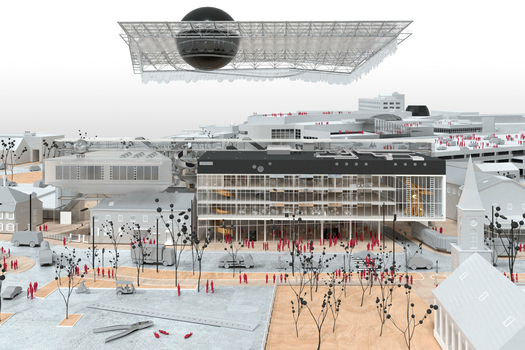
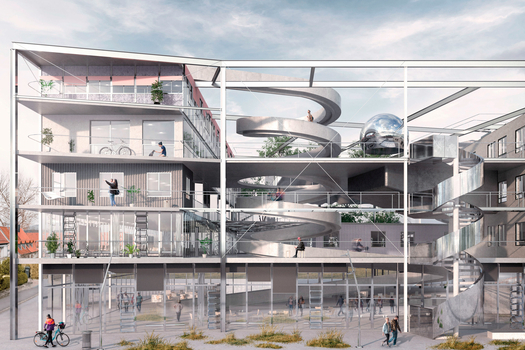
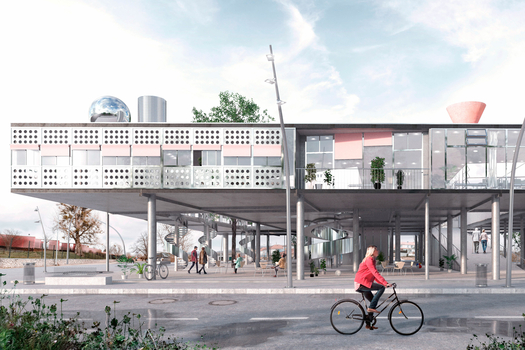
Office: Pedro Pitarch - architectures & urbanisms
Function: Architecture
Average age of the associates: 32 years old
Has your team, together or separately, already conceived or implemented some projects and/or won any competition? If yes, which ones?
Since 2015, when the office was founded under the name ‘Pedro Pitarch Architectures & Urbanisms’, the practice has focused on public projects half way between architecture and urbanism, continuously participating in open competitions in order to afterwards be able to develop the projects. The work of the office has been acknowledged and awarded in several architectural competitions such as First Prize for the Restoration of the Central Cinema of Cartagena (Spain, 2020), a project which is currently under development, Fifth Prize in ‘Berlin Brandenburg 2070 - 100 Years of GrossBerlin’ developing a Masterplan for the future growth of Berlin (Germany, 2020), Second Prize in ‘Dom Competition’ an Open International Competition for Alternative Layout Designs in Standard Housing (Russia, 2018), Second Prize at ‘New Cyprus Museum’ for the design of the National Archaeological Museum (Cyprus, 2017), Honor Mention for the ‘Cultural EPIC Centre & Masterplan’ at Gorizia Station border Zone (Italy and Slovenia, 2020) and First Prize with ‘The Cultural Factory’ for the Restoration of C.L.E.S.A. Factory Industrial Building (Madrid, 2015).
Does your team share a common workplace? if yes, give us a short description:
My office is currently based in a former commercial productive space at the very centre of Madrid, in the heart of Malasaña district. A space that we transformed ourselves into an architectural atelier. The fact of working on a re-programmed architecture is also a professional statement that aims to claim that architecture goes far beyond from the mere definition of spaces or the design of architectural shapes, to the holistic construction of contexts for certain uses, activities or events. Consequently, the role of the architect stands as a mediator among many things that are not necessarily architectural per se.











